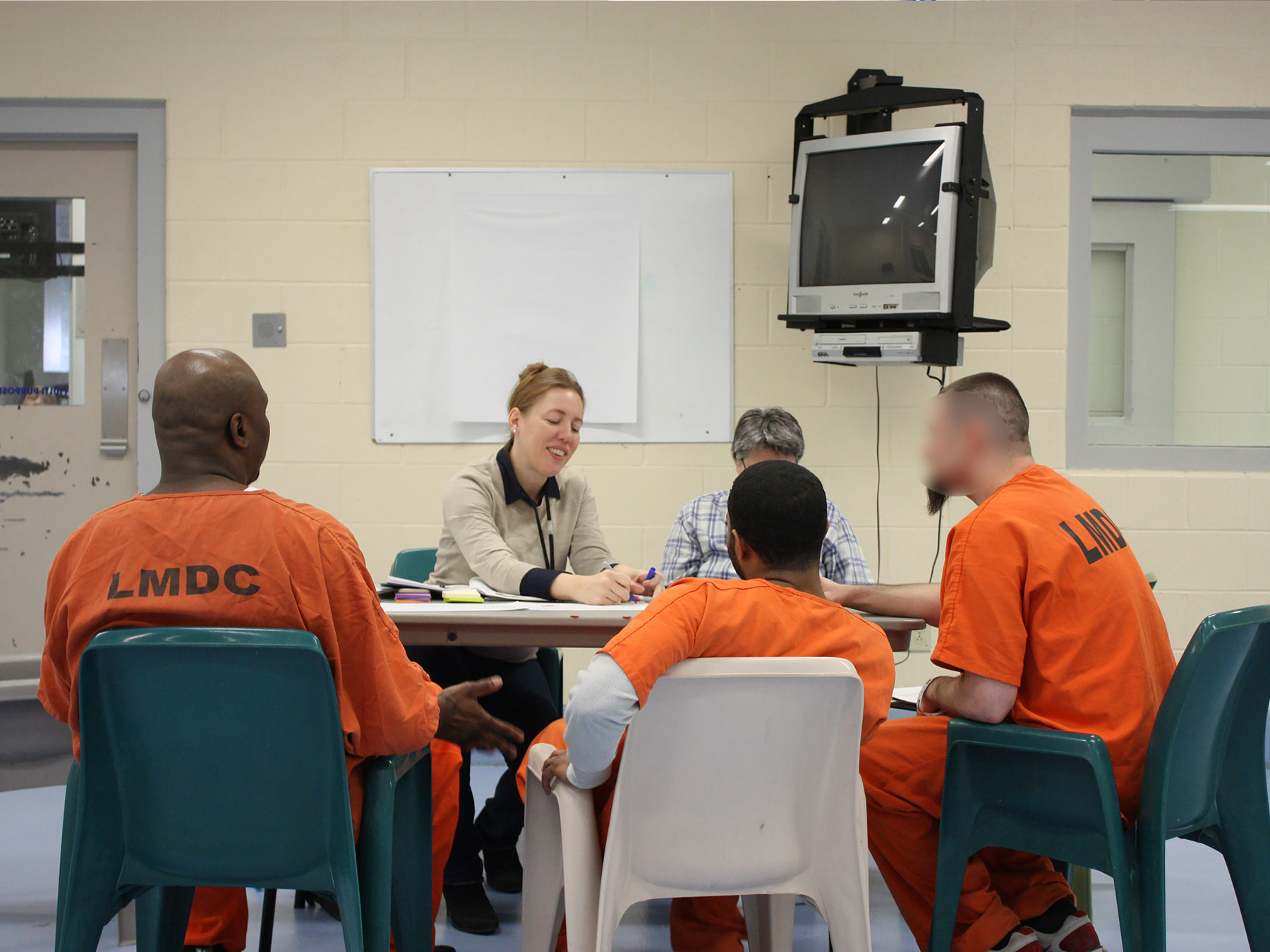

Interviews with justice-involved people
Interviews with community-based practitioners
Louisville’s jail facilities had a capacity of nearly 1,800 people, but in 2015 they were over capacity by nearly 25% — a surge driven by arrests related to the opioid epidemic. Because of crowding, people arrested for nonviolent offenses were being housed with people arrested for violent offenses. We also learned that the jail was struggling to respond to people who were experiencing opioid withdrawal while incarcerated, and that many people released from jail swiftly returned on new charges.
The project team conducted research with nearly 70 stakeholders — in jail, in the community, and in City government. Justice-involved people described the destabilizing effects of detoxing in the jail, then of living in crowded dorms with dozens of bored, unhappy people and of the violence that sometimes flared, especially as people came back to jail after “a bad day” in court. We heard how jail itself created conditions that led to repeat jailing: loss of jobs, health insurance, housing, family relationships, self-esteem. “Who’s going to hire me now?,” one person asked us.
Officers with an interest and training in security felt unprepared (and sometimes unwilling) to be healthcare providers. One outwardly stoic officer, when asked what one change to the jail would be most valuable, emphatically said “more mental health services” for inmates, and described his own stress and frustration. It became obvious that for the jail to better serve the people it incarcerated, it had to also address the wellbeing of staff members.
Through our research, we identified that each of these users of the jail system needed their basic needs met, a sense of dignity, a support network, a useful purpose to their day, a mountaintop perspective, and a clear path to a better future.
The experiences captured during research were turned into six shared user needs.
This project ended with design concepts. This means that, by PPL’s current Sprint and Release model, the project wrapped after Release 4: Synthesize. Based on the six shared needs we identified, the project team delivered a set of findings, an assessment of the needs shared by multiple system participants, a sheaf of personas, and five policy-and-service concepts for reducing jailing, improving jail experiences, and limiting returns to jail.
We later heard that the jail director said it was “the first time anyone was looking for a win for the officer and a win for the inmate in a project.”
Our concepts included models for providing support services and substance abuse treatment interventions keyed to duration of jail stay; reducing dangerous idle time in jail through educational and capacity-building activities; offering medically validated interventions, in jail and in the community, to stabilize people with substance-abuse issues; short-circuiting cycles of family damage by using data to pinpoint better services for families of jailed people; and providing incentives for police officers to divert non-violent offenders before arrest.
We later heard that the jail director said it was “the first time anyone was looking for a win for the officer and a win for the inmate in a project.”
While our five specific concepts were not deployed as we specifically proposed, our recommendations provided groundwork for a series of changes over the following years.
The City began exploring how to make the jail facility and staff more responsive to people experiencing pain and stress, from environmental changes to mindfulness training. Some improvements were made to release procedures. The City and State governments began collaborating around pharmacy interventions to address people denied prescription medications, and in 2016 the jail began piloting provision of maintenance medications to jailed opioid users, an effort that’s continued to expand.
Jail & Substance Abuse Report
The final report summarizes findings from discovery research, including personas, shared needs, and design concepts.
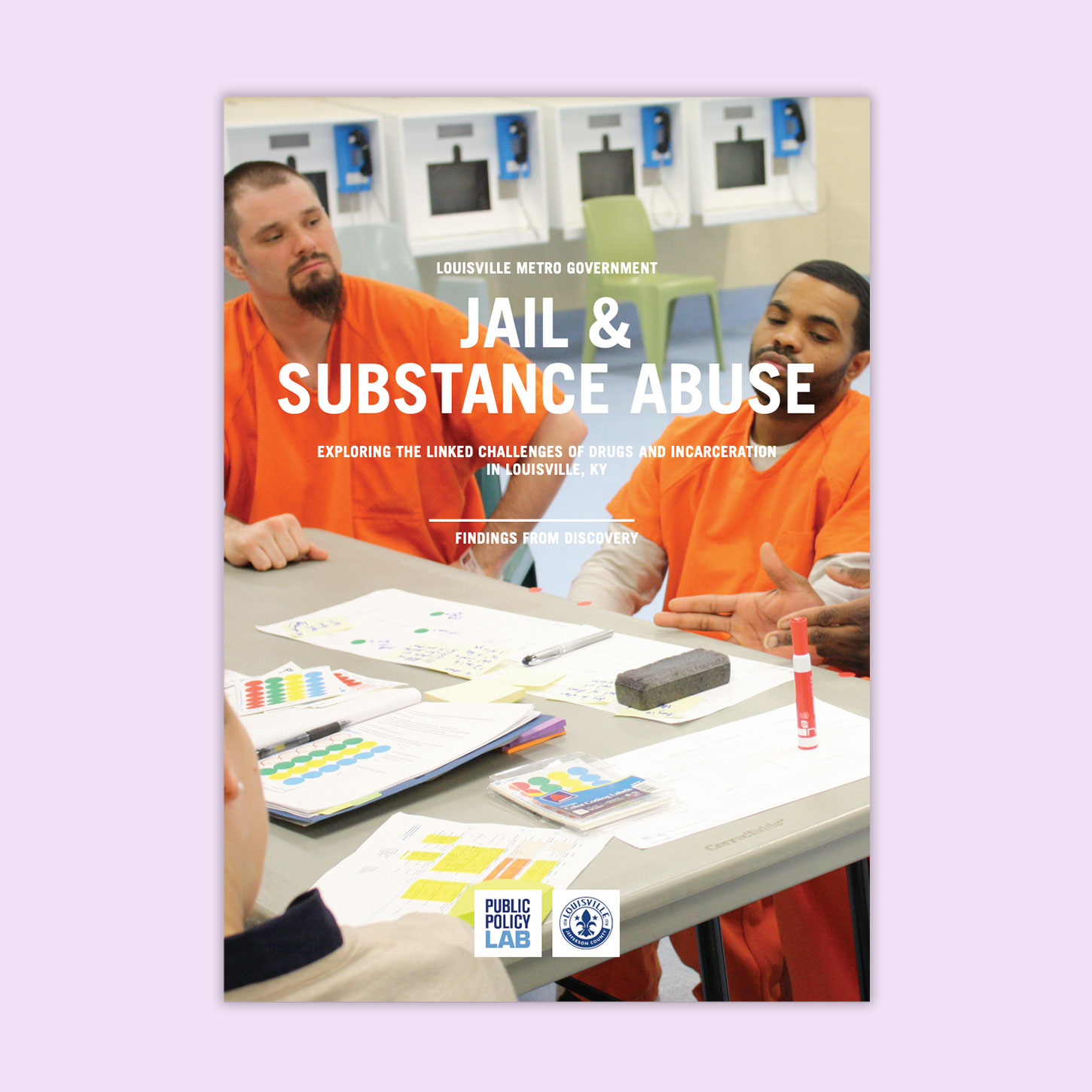
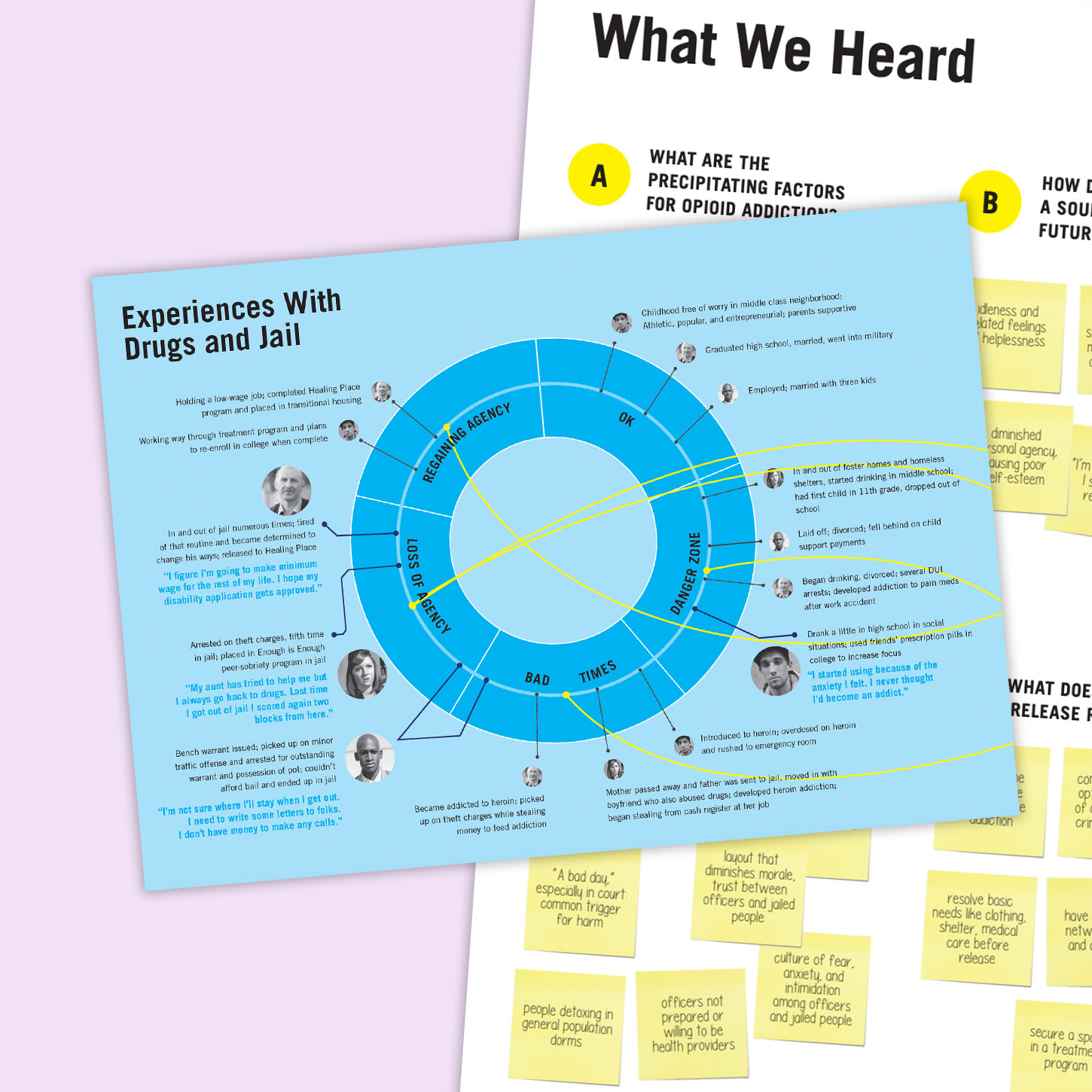
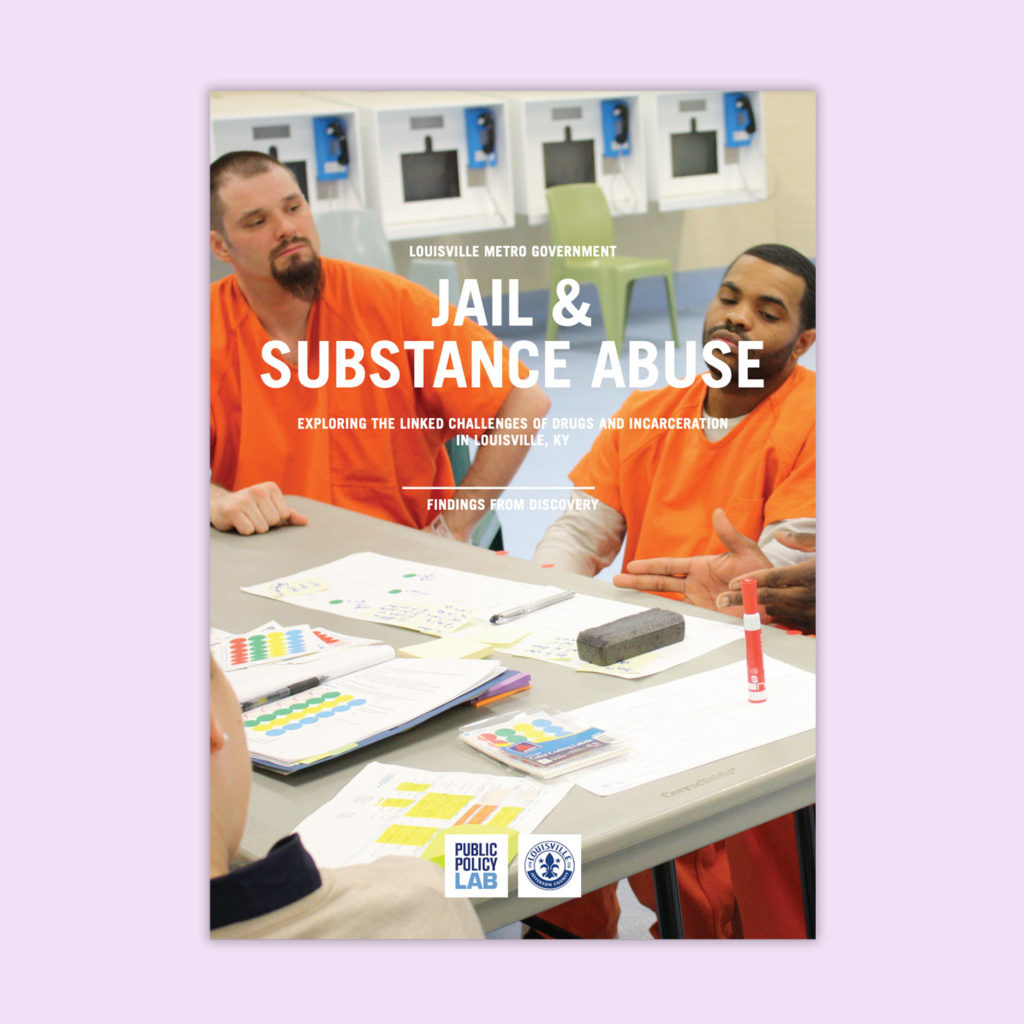
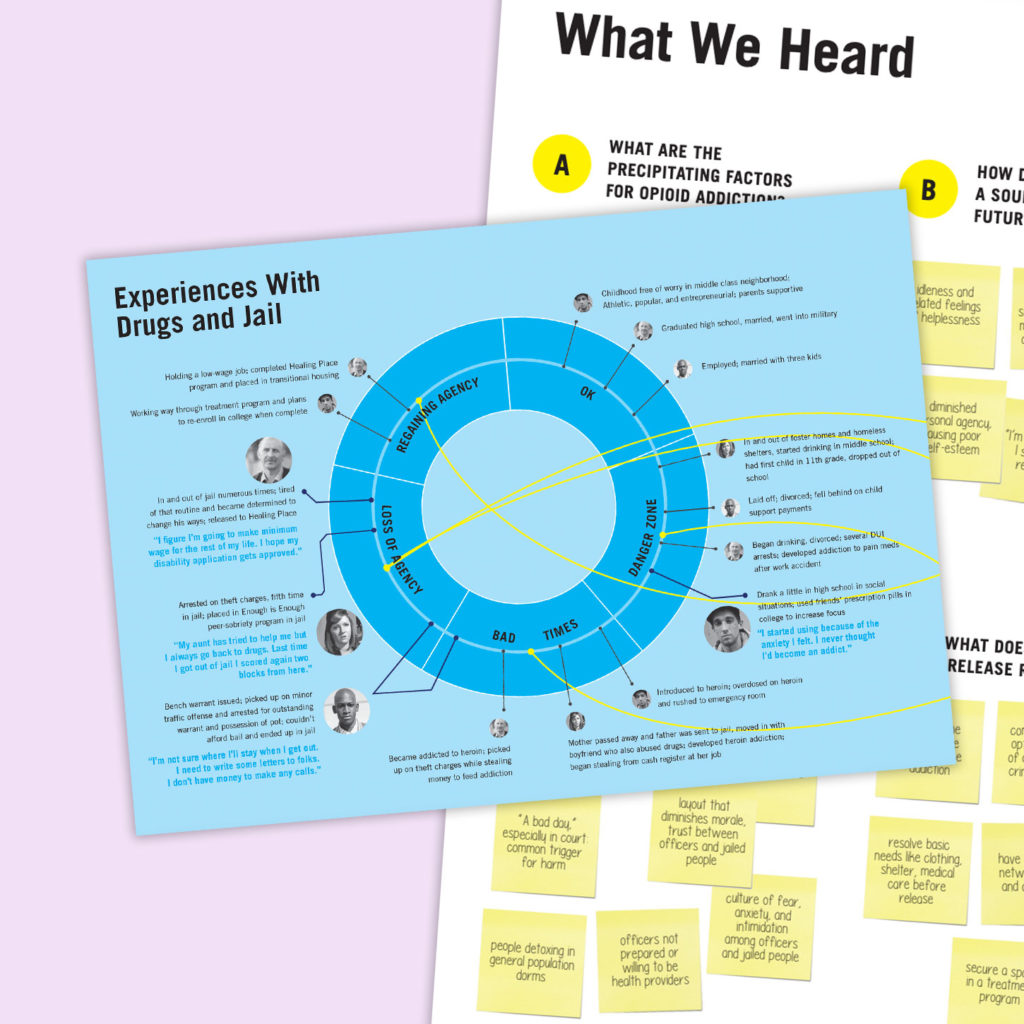
PPL is a tax-exempt 501(c)(3)
nonprofit organization.
info@publicpolicylab.org
+1 646 535 6535
20 Jay Street, Suite 203
Brooklyn, NY 11201
We'd love to hear more. Send us a note and we'll be in touch.
We’re always open to talking to folks with the skills, experience, and passion to join our team. Share your interest with us through our general application.
To hear about future job announcements, follow us on Instagram, Twitter, and LinkedIn or subscribe to our newsletter.
Enter your email below to subscribe to our occasional newsletter.
Wondering what you’ve missed?
Check out our
The Public Policy Lab is a tax-exempt
501(c)(3) nonprofit organization.
Donate now to support our work; your
gift is tax-deductible as allowed by law.